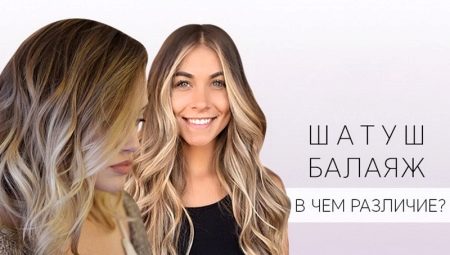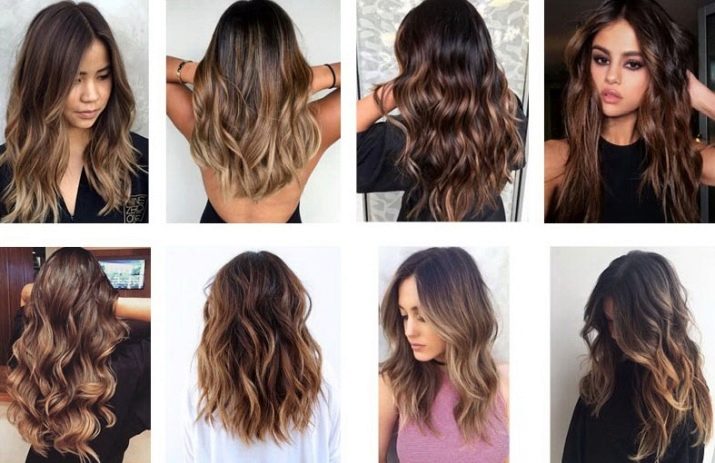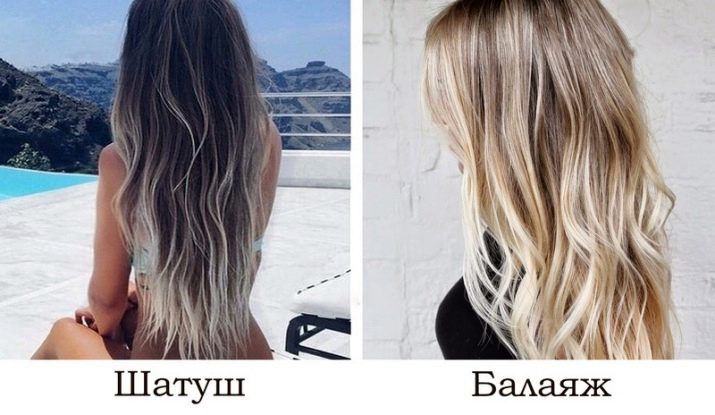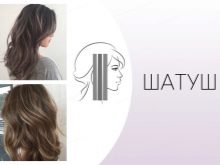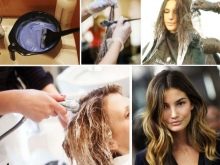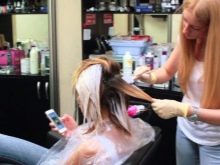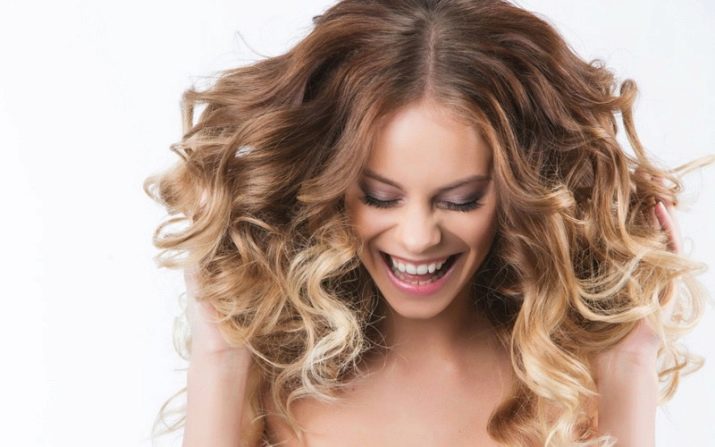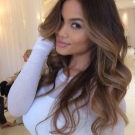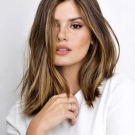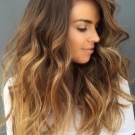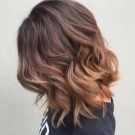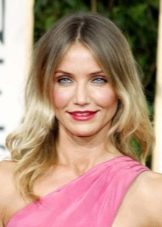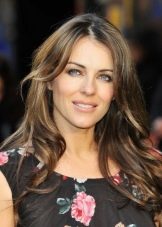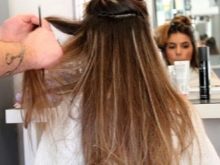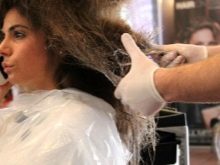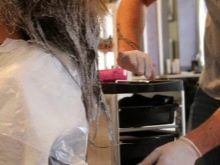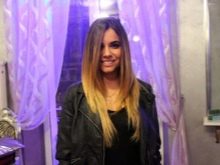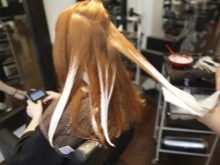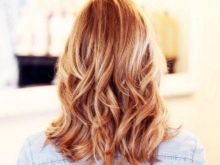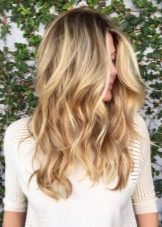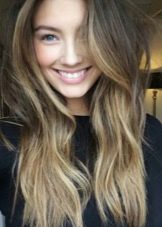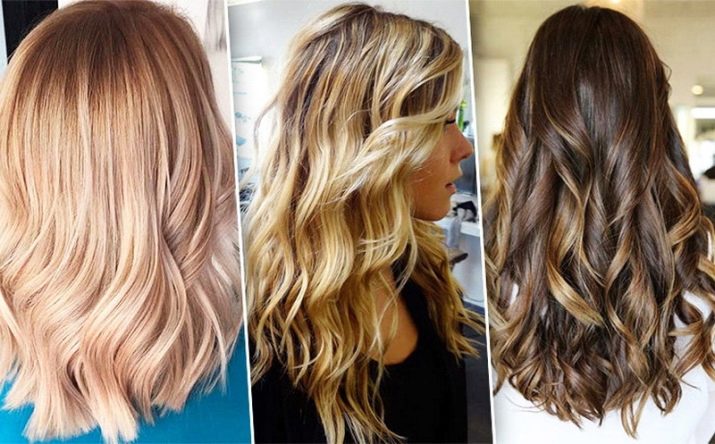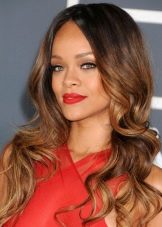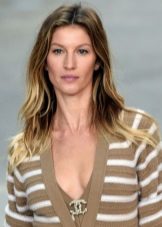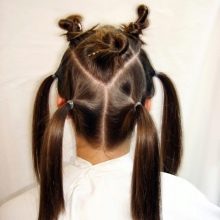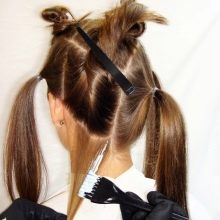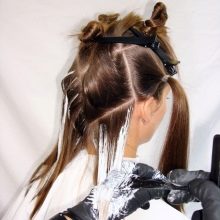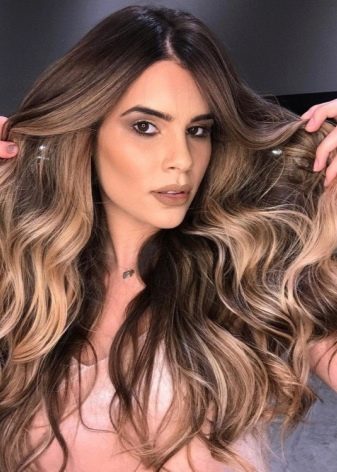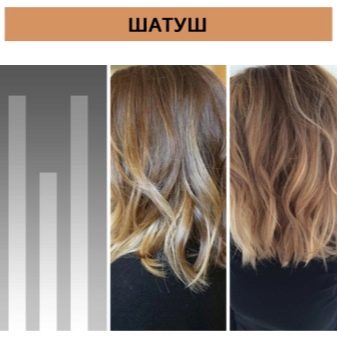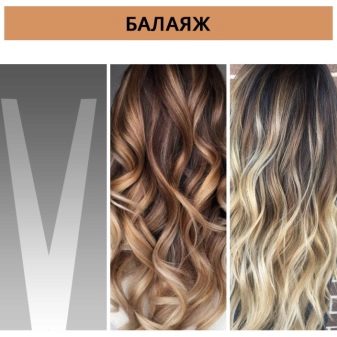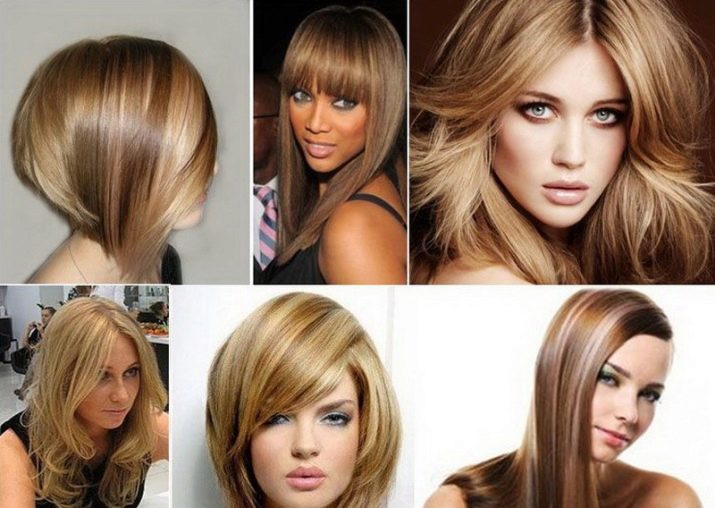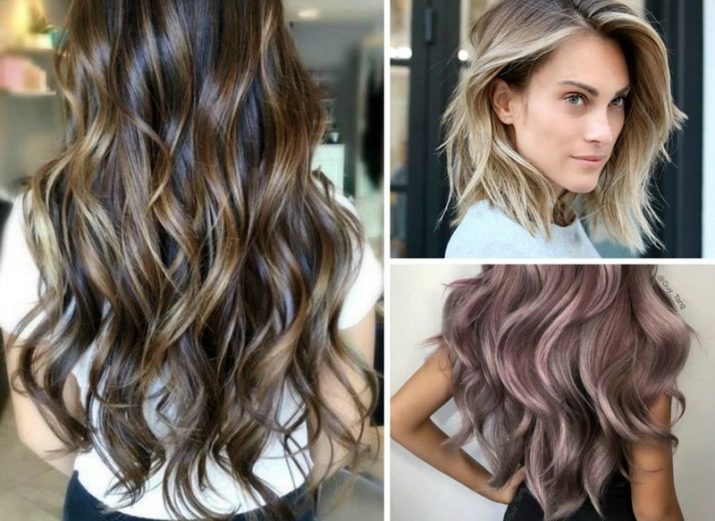At the moment there is a fairly large number of various hair coloring techniques. Due to this, in each case, you can achieve different results and visual effects. Hair dyeing options can be partial, solid, with a smooth color transition. Therefore, the fair sex has a wide choice when creating their image. This article will describe the techniques of coloring called shatush and balayazh.
What it is?
At first glance, without delving into the essence of these two methods of staining, it may seem that they are almost the same. But in order to understand their peculiarities, each of them should be considered in more detail.
Shatush
The basis of this method of coloring hair lay French highlighting. The task of the master is to create the visual effect of naturally burnt strands. Therefore, the color gradually goes from dark to light. More front hair lightened intensivelyframing the face.
During the procedure applies no less than 3-4 shades coloring composition. Divided into strands of hair dyed selectively. In this case, the master does not use foil, therefore, the applied coloring composition can easily contact with adjacent curls. It is due to this technique that it creates the smoothest and most natural overflow between shades.
Shatush can be performed with a pile or without. The most common first option. Before applying the dye to the hair, the master combines individual curls, then covers them with the coloring composition.
The second method - without a pile, is much more difficult to implement. At home, without proper skill it is simply impossible. Yes, and not every master in the cabin will be able to make high-quality shatush without combing the strands. Keep this in mind when choosing a coloring method.
Best of all shatush looks on dark or dark blond hair shoulder length and below. On a short hairstyle, the effect of overflow of shades will be almost imperceptible, or the master simply will not be able to make smooth transitions due to the limited length of hair. And for a light hairstyle it is very difficult to choose 3-4 shades that will be noticeable, that is, lighter than the main ones. As an option, the master can offer you to darken the hair in the root zone.
The advantages of shatush technology.
- Due to the fact that at the very roots the hair is not colored at all, and the transition of colors usually begins 2-3 cm below the base, hairstyle does not need frequent tinting.
- Shatush looks very natural when masking gray hair and individual subsidence.
- Visual staining of this method gives pomp and volume loose hair, even quite thin and not thick.
- Lightening technique shatush it can be applied on all dark and brown shades hair. It is also possible staining of sand and gold.
- The method can be applied both on straight, curly, curly and curly hair.
- No need in the application of coloring.
Of celebrities periodically used this method of clarification Jennifer Lopez, Cameron Diaz, Elizabeth Hurley, Jennifer Aniston.
Performing clarification technique shatush.
- With a comb a neat strand 1.5-2 cm wide is separated. The rest of the hair, so as not to interfere, is stabbed with clamps.
- Separated strand Well comb with a comb with thin frequent teeth.Similarly, hold all the hair in a pile, pre-dividing them.
- Coloring composition applied to the topmost layer of hair, but not from the roots, but slightly below.
- Without using foil and other fixtures, wait for the right time with open hair.
- After expiration specified by the manufacturer of the time period of exposure to paint, wash it off.
Balayazh
The word, which became the name of this coloring technique, is translated from French as a verb “revenge”. This term can be used to denote the basic technique of the wizard’s work when applying paint. A brush with makeup like hair sweeps, leaving a specific trace on them. Thanks to this technique, color transitions become as smooth as possible, barely noticeable.
As in the above clarification method, during operation no foil or film used. Paint works outdoors. However, this technique is used not only on light shades. For coloring you can use any color, including bright and unnatural.
Hair processed approximately from the middle of the length, sometimes from the lower third. Master applies 2-3 shades. Best of all balayazh looks when playing around natural shades of hair. Therefore, this method is used more often on dark and light brown hair. However, there are no direct restrictions on hair color for applying the balayazh method.
This technique can dye hair of any stiffness, thickness and thickness. The optimal length is below the shoulders.
There are several subspecies of balayazh that give slightly different visual results.
- Coloring only the tips. This creates a smooth asymmetry effect.
- Dyeing most of the hair. The front curls are fully tinted, the rest only selectively. At the same time shades are close to the base hair color.
- Toning medium intensity. Strands are colored selectively throughout the head.
- Master can apply paint T-shaped or W-shaped.
The advantages of this method of staining.
- Does not require a dramatic change in hair color. Well imitates modulations of natural shades.
- Colored hair no color correction required.
- The toning method can be applied on hair of any color, from dark to very light.
- This method can be painted hair of any type and structure.
- Suitable for hiding gray hair, it does not require a cardinal change of the image.
Among the shortcomings of the technique of balayazh can be identified relative high cost. The application of the coloring composition is quite time consuming and requires skill. It should take seriously the choice of a specialist to whom you want to entrust staining. Famous women who repeatedly showed themselves in front of cameras with this technique were their hair - Jessica Alba, Sarah Jessica Parker, Jennifer Lawrence, singer Rihanna, Gisele Bundchen.
Perform tinting.
- A narrow strand of hair separates. A brush produces light sweeping strokes on curls.
- The strand remains open. After that, the next curl is processed.
- After paint application the required amount of time is kept for the required number of curls.
- The paint is washed off.
What is their difference?
It is difficult to say which staining technique of the above two is better. They create a slightly different effect, so the choice is to be guided by what image and style of hair you want to get in the end.
- Balayazh different higher price for the coloring service. But this is due to the complexity of this technique and the painstaking application of paint.
- There is also a difference in hair length, on which these techniques look the most profitable. Here the shatush method is more variable. It can be used for toning both long and medium length haircuts.
You should not use this method only on very short hairstyles. In this case, the master simply can not achieve the desired effect.
For balayazh, the minimum is a square not higher than the middle of the neck.
- Modern shatush staining is, in fact, improved highlighting. The application of the coloring composition occurs only on individual strands. Technique balayazh implies a solid color tips.
- Paint application The hair is also different. Shatush is carried out with the help of vertical strokes on individual strands. Balayazh assumes vertical movements with a brush.
- Shatush looks most profitable on dark hair. On light shades, it loses its expressiveness. The second type of coloring - balayazh, can be used for hair of any color from dark to very light blond.
What is different from other ways?
Booking involves the creation of a color transition mainly natural shades. It is of several types: classical, californian, glaring, zonal. The difference from shatusha is that strands are colored from the very roots. And this kind of coloring differs from balayazh by applying the composition only to separate pre-separated strands.
Highlighting is a classic method of partial lightening hair. In the same way as when applying a bronde, the curls are painted from the very roots. While the techniques of shatush and balayazh do not affect the hair at the base. Each strand has one shade; no transition between colors is done.
Equipment ombre mainly applied on dark hair. In this way, the tone smoothly shifts from dark at the very roots to light at the tips of the strands. At the moment, blondes can do the opposite ombre, that is, gradually darken the hair color, leaving a light tone at the base. In contrast to the methods of dyeing shatush and balayazh, ombr implies a uniform application of the composition.
Coloring differs in that strands do not change shade. Each separated strand is colored in one color along the entire length. With a continuous coloring all the curls are completely repainted in similar shades. The master can apply up to 12-15 different colors.
What is better to choose?
Each of the above techniques creates a specific visual effect. Therefore, the choice is to be guided by the desired hairstyle and the way you want to create. You should also consider the condition of the hair, their length and the original shade to take into account all the nuances of the final result.
- Both techniques are better. Do not use on very short hair. The average length for coloring should be from the shoulders and below. You can even say the longer, the more beautiful and effective the result will look.
- It is possible to apply both methods of coloring on light, black, dark, brown hair. But in a better position still find themselves brunettes. If the original shade is blond, the master will resort to darkening the hair at the base.
- Balayazh is more costly.
- If you want to get hue transition effect over the entire length of the hair, then you need to choose the technique of shatush.
- Keep in mind that shatush does not need correction, but the second technique will require a visit to the master every 2-3 months.
On the techniques of coloring shatush and balajazh, see the following video.
